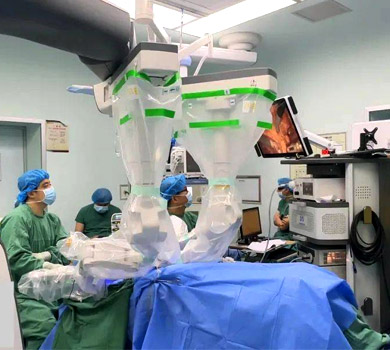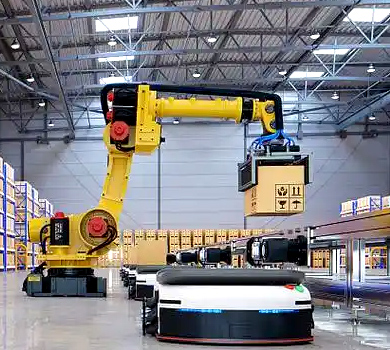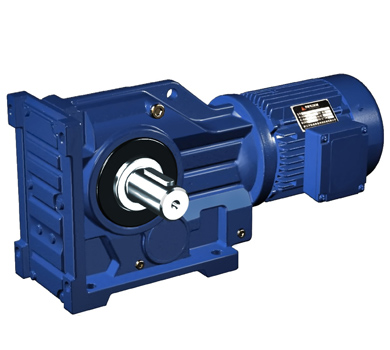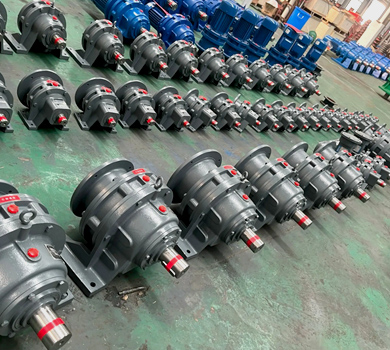Multi-cavity injection molding is a critical technology within the plastics manufacturing industry, where high production rates and product consistency are required. In such systems, multiple cavities are used to produce several parts in a single molding cycle. To optimize efficiency, modern systems require fast and precise mold switching driven by high-performance motion control systems. The gearboxes used in these mechanisms must meet stringent performance and reliability standards to ensure smooth operation and minimal downtime.
Current trends in injection molding automation include higher cavity counts, faster cycle times, and the integration of advanced robotics and sensors for increased flexibility and responsiveness. However, this progress brings significant technical challenges, especially in the design and performance of transmission systems.
Industry Challenges and Pain Points
Key pain points in multi-cavity injection molding automation systems include:
- High torque and compact design requirements due to limited space for motion components;
- Need for fast mold switching, which demands high response speed and dynamic performance from gearboxes;
- Ensuring long-term reliability under repetitive and high-load operations;
- Energy efficiency optimization to reduce operational costs;
- Thermal management under high-speed operations to avoid premature wear and failure;
- Compatibility with existing drive and control systems to ensure seamless integration.
Key Role and Technical Requirements of Gearboxes in this Industry
Gearboxes are essential for achieving precise and repeatable motion in multi-cavity injection molding systems. The critical performance criteria for gearboxes in this application include:
- High torque density to meet the compactness and robustness requirements;
- High positioning accuracy (±1 arcmin or better) for cavity alignment;
- High-speed response capability to support rapid switching and positioning;
- Long service life with low maintenance frequency;
- Robust environmental adaptability (e.g., temperature, dust, and humidity resistance);
- Compact and modular structure for flexible installation and integration.
In addition to these explicit performance requirements, gearboxes must also maintain compatibility with high-speed servo motors, withstand high thermal loads, and meet high IP protection standards to ensure stable operation in industrial environments.
Waimica Servo Gearbox Solution
Waimica has developed a specialized servo gearbox series that directly addresses the performance bottlenecks in multi-cavity injection molding automation systems. Our engineering team focuses on the following aspects to meet the industry’s requirements:
- Ultra-compact design with optimized space usage;
- High precision (backlash < 1 arcmin) for cavity positioning;
- High-efficiency transmission to minimize energy loss;
- IP65 rating for dust and water resistance;
- Custom input flange options for compatibility with different motor types;
- Thermal management design for high-speed operation in elevated temperatures.
Below is a comparison of Waimica’s servo gearboxes with international counterparts in key technical specifications:
| Parameter | Waimica | Brand A | Brand B |
|---|---|---|---|
| Torque Range (Nm) | 100 - 800 | 120 - 850 | 100 - 850 |
| Backlash (arcmin) | < 1 | < 1 | < 1.5 |
| Efficiency (%) | 90 - 95 | 92 - 97 | 88 - 93 |
| Speed Rating (rpm) | 3000 | 2800 | 3200 |
| IP Rating | IP65 | IP65 | IP64 |
| Operating Temperature Range (°C) | -20 to +80 | -20 to +70 | -20 to +65 |
Waimica’s design leverages advanced planetary and harmonic drive technologies to deliver high stiffness, minimal backlash, and excellent heat dissipation under continuous high-speed operations. Our modular approach allows customers to configure systems based on specific cavity numbers and mold sizes, reducing integration complexity and cost.
Typical Application and Customer Feedback
Customer Case: European Automotive Tier 1 Supplier
A European automotive component manufacturer required a high-speed mold switching system for a 12-cavity injection molding machine. The existing system suffered from frequent backlash issues, causing misalignment and production delays.
Waimica’s Approach:
- Initial on-site survey and performance analysis of the existing drive system;
- Selection of Waimica’s high-torque servo gearboxes with backlash < 1 arcmin;
- Custom input flange design to match the customer’s motor platform;
- Thermal performance simulation to ensure stability at 3000 rpm;
- Installation and integration support with the customer’s control system.
Performance Improvement:
| Parameter | Before Waimica | After Waimica | Improvement |
|---|---|---|---|
| Backlash | 1.5 arcmin | < 1 arcmin | 33% reduction |
| Machine Uptime | 82% | 95% | 13% increase |
| Energy Consumption | 15.2 kWh/cycle | 13.7 kWh/cycle | 9.8% decrease |
| Service Interval | 3 months | 12 months | 300% increase |
Following the integration of Waimica gearboxes, the customer reported a significant improvement in system performance, with fewer mold misalignments, higher production rates, and extended maintenance intervals. This has directly contributed to cost savings and increased production efficiency.
Conclusion and Waimica Value Proposition
Waimica stands out in the injection molding automation sector by combining high-performance engineering with cost-effective manufacturing. Our servo gearboxes deliver precision, durability, and adaptability to support the evolving needs of high-speed, multi-cavity molding systems. With a strong track record in delivering customized solutions and rapid prototyping capabilities, Waimica is positioned as a reliable alternative to international brands, offering superior technical specifications and long-term service support.
As the injection molding industry continues to evolve toward more intelligent, automated, and energy-efficient production lines, Waimica is committed to providing cutting-edge transmission solutions that meet the highest standards of performance and reliability. We remain a strategic partner for customers looking to optimize their injection molding operations through advanced automation and precision drive technologies.









